Microsoft Edge Chromium is set as the default PDF reader to open and view PDF files in Windows 11/10. So, whenever I attempt to open any PDF file in Windows, it automatically gets opened in Edge browser, although my preferred choice is Acrobat Reader. Moreover, when I try to change the settings, the browser hijacks it and resorts to its old behavior again. While many would not oppose this move, I believe it’s not intended for everyone. So, here’s how you can stop Edge from changing the PDF viewer association.
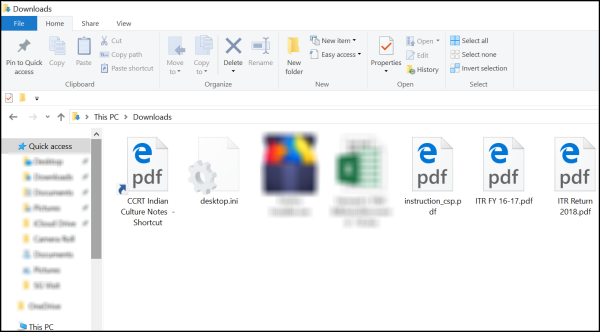
Stop Edge from hijacking PDF/HTML associations
The change is observed to be triggered by a reset of File Association for a file type, which restores Windows defaults. But why do PDF FileAssociations get reset every time a user restarts his PC?
The feature team for FileAssociation explains that its protection mechanism in Windows prevents direct changes to the UserChoice area of the registry for each file type. As such, when no FileAssociation is configured in the registry or if an application makes the hash void by incorrectly writing to the UserChoice registry key to set associations, a reset of FileAssociation for that file type gets triggered, restoring default status. Hence, we need to edit a registry entry.
Here is the solution to the PDF/HTML file type being continually reassigned to Microsoft Edge browser.
Microsoft Edge Chromium
If you find that PDF files open automatically in the Edge browser without downloading them, you’ll need to tweak the settings. It will prevent the Edge browser from being the default PDF reader. Here’s how it’s done!
Open Microsoft Edge browser.
Click Settings and more from the upper-right corner.
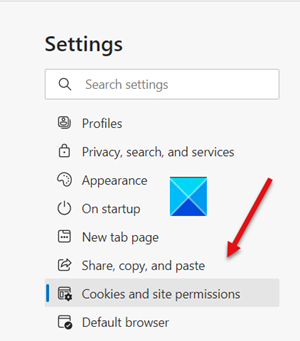
Select Settings and go to Cookies and site permissions as shown in the image above.
Switch to the right side and scroll down to the All permission section.
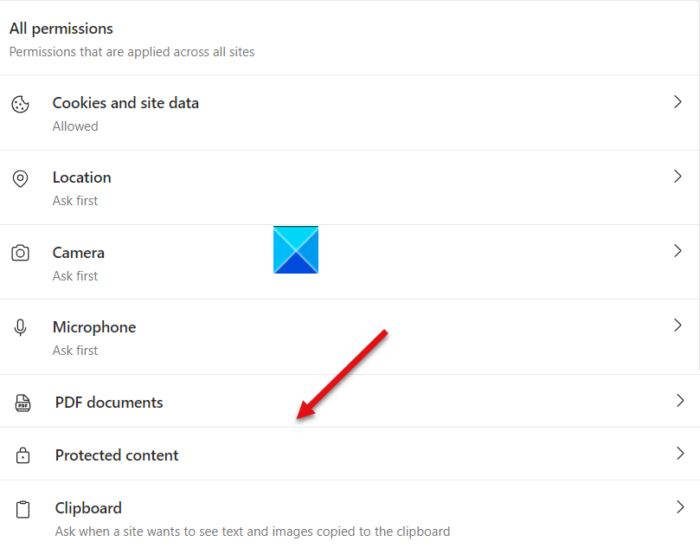
Under it, locate the PDF documents entry.
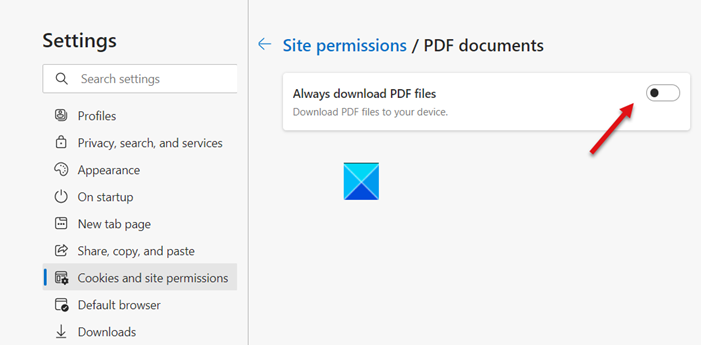
Now, toggle the switch for the Always download PDF files option to the Off position.
When done, close the browser and re-launch it.
Microsoft Edge Legacy
Open the ‘Run’ dialog box, type ‘Regedit’ and hit ‘Ok’ button. Next, navigate to the following key –
HKEY_CURRENT_USER\SOFTWARE\Classes\Local Settings\Software\Microsoft\Windows\CurrentVersion\AppModel\Repository\Packages\Microsoft.MicrosoftEdge_25.10586.0.0_neutral__8wekyb3d8bbwe\MicrosoftEdge\Capabilities\FileAssociations

Please note that, under the key that starts with Microsoft.MicrosoftEdge the address could be different in some versions of Windows.
For instance, in my case it was-
Microsoft.MicrosoftEdge_42.17134.1.0_neutral_8wekyb3d8bbwe
When found, simply expand this key and others under it. Then, choose FileAssociations and look at the entries provided in the right corner of the screen.
Observe closely the Data string displayed for the .pdf name.
At the time of this writing, the string is this, but it may be different in your case-
AppXd4nrz8ff68srnhf9t5a8sbjyar1cr723
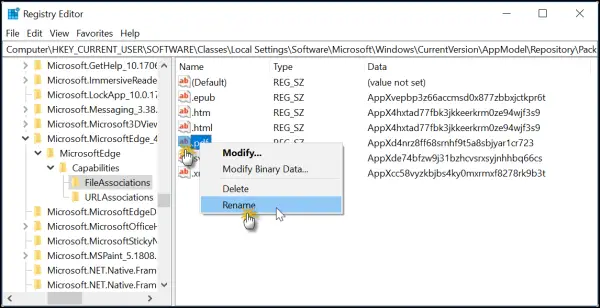
Right-click on the above entry and select the Rename option from the menu displayed.
After that, add the underscore character to the end of the name and press Enter to save the new name.
When done, navigate to Control Panel and open the Default Programs applet to configure the change, i.e., choosing a different application as the default application for the PDF files.
From now on, Edge should not reinstall itself as the default application.
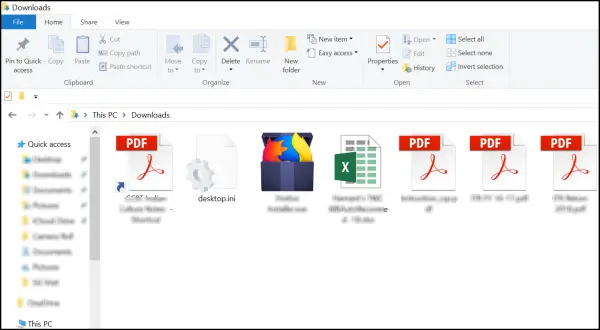
Should you wish to change this setting to original and restore the earlier experience, simply remove the underscore character from the name of the key-
AppXd4nrz8ff68srnhf9t5a8sbjyar1cr723
If Windows does not allow you to edit the Registry key, you may need to run regedit as admin and take ownership of the Registry key.
I hope this helps!
No idea, really, how good or bad MS Edge is. All I know is this: when any maker chooses to be “in my face” by bolting on a product and making it all-but-impossible to remove – then I try my very hardest to eliminate it; and even if I can’t, I will go out of my way to use an alternative instead.
Statement is very flawed
it default browser Built into the OS
and removing it would affect other things built into the OS
for apps that use Edge HTML
thanks for it tip.
Simpler option.
To download Adobe reader And change the default setting to it
Not necessarily. Make system backup’s and you can experiment (and learn) without harm. In this case, removing Edge hasn’t affected anything else at all (good riddance!) – although the same cannot be said for IE. IE, unfortunately, cannot / should not be removed. But going back to my initial post — MS actually drives me to using various 3rd party apps – like Firefox browser. NO IE or Edge for me.
Sure you can use any third party Browser.
I use Firefox/Edge myself.
but edge has his it place in the OS/app that uses uses its rendering engine.
IE for businesses/ legacy Support
Yes, it works in some cases but not all. It’s observed that after sometime the problem appears again. Hence, I have suggested an alternate method to this.
Thanks…been vexing me for some time!